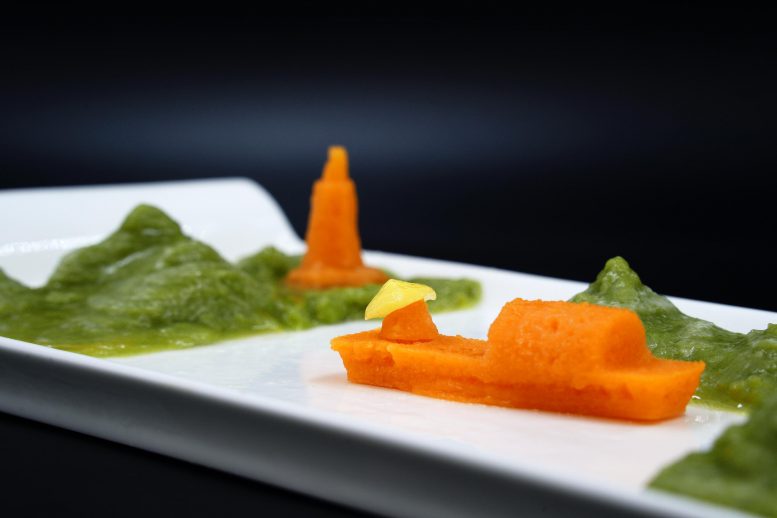https://scitechdaily.com/a-mosaic-of-fire-data-using-radar-data-to-decipher-how-well-landscapes-recover-after-major-fires/
4 Years, 2 Months, 2 Weeks, 5 Days, 15 Hours, 48 Minutes ago

Singapore researchers develop new method for ‘printing’ fresh vegetables, leading to tastier, more nutritious food for patients with swallowing difficulties.
Researchers from Nanyang Technological University, Singapore (NTU Singapore), Singapore University of Technology and Design (SUTD) and Khoo Teck Puat Hospital (KTPH) have developed a new way to create “food inks” from fresh and frozen vegetables, that preserves their nutrition and flavor better than existing methods.
Food inks are usually made from pureed foods in liquid or semi-solid form, then 3D-printed by extrusion from a nozzle, and assembled layer by layer.
Pureed foods are usually served to patients suffering from swallowing difficulties known as dysphagia. To present the food in a more visually appetizing way, healthcare professionals have used silicone molds to shape pureed foods, which is labor and time intensive, and requires storage.
While 3D food printing means food can be easily produced in a desired shape and texture in a shorter time, the dehydrated food and freeze-dried powders used as food inks usually contain a high percentage of food additives such as hydrocolloids (HCs) to stabilize the ink and enable a smoother printing process. High concentration of HCs usually changes the taste, texture, and aroma of the printed food, making it unappetizing to patients with dysphagia. This may lead to reduced food consumption and malnutrition among patients.
To overcome this challenge, the research team explored various combinations of fresh and frozen vegetables to make the food inks stable.
Not only were they able to better preserve the nutrition of the printed food, they also made it more palatable. This new method of making food inks should lead to increased meal consumption by patients, contributing positively to their physical health and mental state of mind.